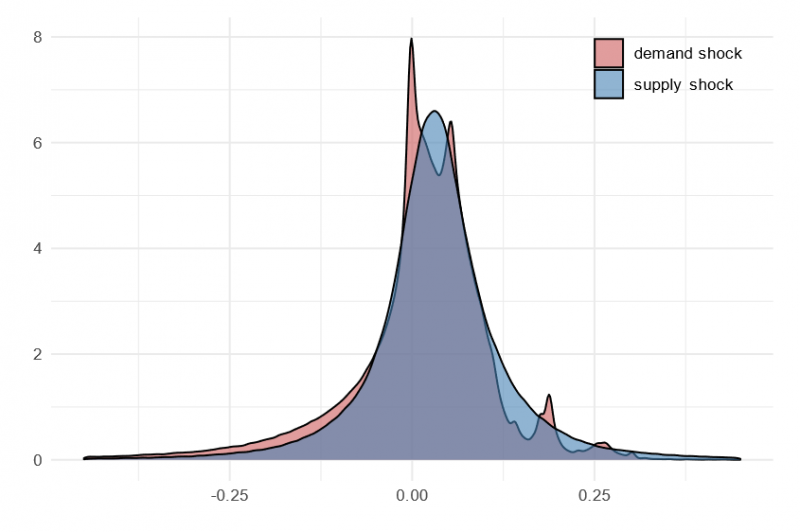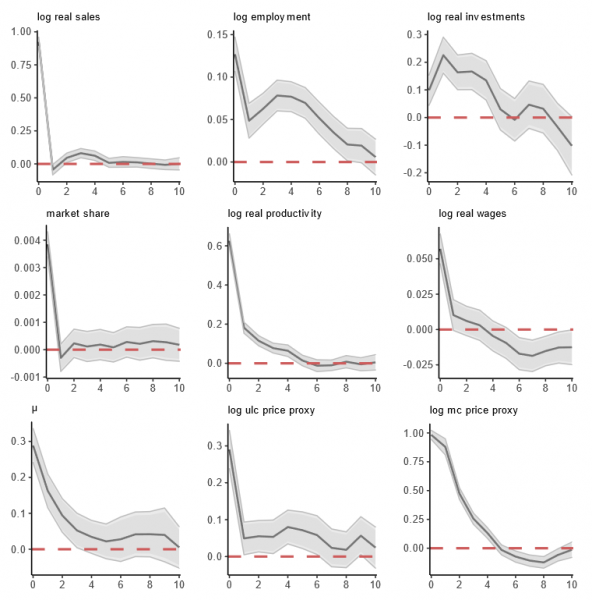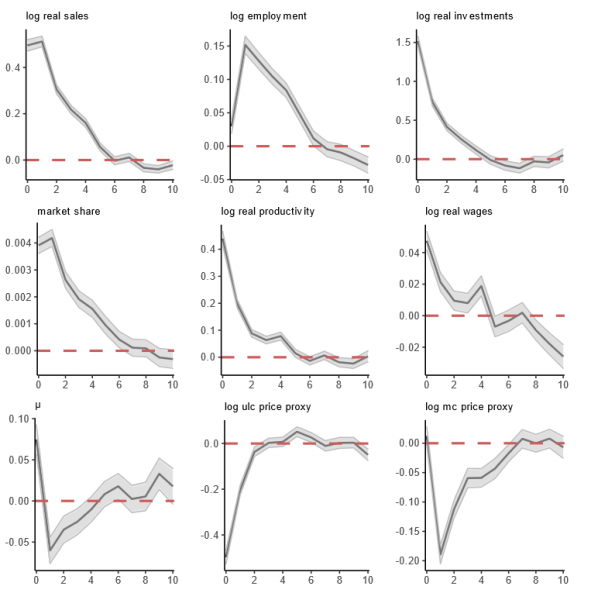References
Bond, S., A. Hashemi, G. Kaplan, and P. Zoch (2020): “Some Unpleasant Markup Arithmetic: Production Function Elasticities and Their Estimation from Production Data,” Working Paper 27002, National Bureau of Economic Research.
Buera, F. J., J. P. Kaboski, and R. M. Townsend (2021): “From Micro to Macro Development,” Journal of Economic Literature.
Burstein, A., V. M. Carvalho, and B. Grassi (2020): “Bottom-up Markup Fluctuations,” Working Paper 27958, National Bureau of Economic Research.
Carlsson, M., J. Messina, and O. Nordstrom Skans¨ (2021): “Firm-Level Shocks and Labour Flows,” The Economic Journal, 131, 598–623.
Cochrane, J. H. (1994): “Shocks,” Carnegie-Rochester Conference Series on Public Policy, 41, 295–364.
De Loecker, J. and F. Warzynski (2012): “Markups and Firm-Level Export Status,” American Economic Review, 102, 2437–2471.
Doraszelski, U. and J. Jaumandreu (2021): “Reexamining the De Loecker & Warzynski (2012) Method for Estimating Markups,” CEPR Discussion Papers DP16027, CEPR.
Gradzewicz, M. (2022): “How do firms respond to demand and supply shocks?,” NBP Working Paper No. 344, Narodowy Bank Polski.
Guiso, L., L. Pistaferri, and F. Schivardi (2005): “Insurance within the Firm,” Journal of Political Economy, 113, 1054–1087.
Jorda,O. (2005): “Estimation and Inference of Impulse Responses by Local Projections,” American Economic Review, 95, 161–182.
Kumar, P. and H. Zhang (2019): “Productivity or Unexpected Demand Shocks: What Determines Firms’ Investment and Exit Decisions?” International Economic Review, 60, 303–327.
Nekarda, C. J. and V. A. Ramey (2020): “The Cyclical Behavior of the Price-Cost Markup,” Journal of Money, Credit and Banking, 52, 319–353.
Olley, G. S. and A. Pakes (1996): “The Dynamics of Productivity in the Telecommunications Equipment Industry,” Econometrica, 64, 1263–1297.
Pozzi, A. and F. Schivardi (2016): “Demand or Productivity: What Determines Firm Growth?” The RAND Journal of Economics, 47, 608–630.
Smets, F. and R. Wouters (2003): “An Estimated Dynamic Stochastic General Equilibrium Model of the Euro Area,” Journal of the European Economic Association, 1, 1123–1175.






